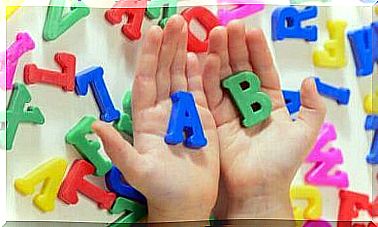Tips For Teaching Children To Wait

It is very important to teach children to wait because it also gives them the ability to handle situations that arise in everyday life. Patience for children means that they must use qualities such as observation, concentration and learning.
Patience is a critical virtue for everyone to learn, but it is not an innate ability. Children need to learn it gradually from their first year of life. However, it is not always easy because children, just like us, live in a society where everything is going very fast and this development seems to be deteriorating exponentially.
Many parents today strive to meet the needs of their children all the time, and preferably as quickly as possible. But when they grow up and get a little older, they have to learn that it is not possible to get certain things at once and that sometimes you have to be patient.
Before testing any of our tips for teaching your children to wait, it is important to understand how the mechanism of waiting works and what emotions are involved.
How much patience do children of different ages have?
During the first 12 months, babies cannot control their emotions or express them effectively. When they cry, they express discomfort or an urgent need such as hunger, pain or fatigue.
For infants, waiting leads to panic, fear and a sense of vulnerability. This experience can be traumatic if it is long lasting, so it is important to try to respond to their needs quickly.
Between 12 months and three years, children still have very little control over their emotions. At the same time, they have a hard time seeing things from the point of view of others because they have no real idea of time. Depending on the circumstances, the wait can seem very long or very short.

Until they are old enough to develop a better understanding of time, it is better to give them a specific reference or time frame so that it becomes a little more tangible for them. Say, for example, ” after you have rested “, ” when mom comes home from work ” or ” when you have finished eating “.
These concepts are more appealing to them. At this age, it is recommended that children be allowed to wait one or two minutes before their wishes are fulfilled.
After the age of four, children begin to understand the concept of patience quite well and can manage to wait a while before their needs are met. At this age, they are also quite independent and self-sufficient and can do a lot for themselves. If their needs are not urgent, they can wait.
Tips for teaching children to wait
Here are four tips to teach kids to wait:
1. Explain
Calmly explain to your children why they can not get what they want right away. Children better understand why they have to wait and how long if they get a good explanation.
For example, if they want a toy, explain that they have to wait for a special occasion: their birthday, a family event or Christmas Eve. By giving the children what they want, but with a delay, you let them understand that there is a difference between their wishes and those of the outside world.
2. Encourage and reward
Remember to always encourage your children when they show patience and show them that you are proud. Continue to praise them for their good behaviors, give them a reward or privilege to acknowledge their efforts to wait.
3. Give a visual signal
Concrete timelines also help children learn to wait. Paste, for example, small stickers with symbols, such as animals or fruits, on the watch. You can ask them to wait until the clock strikes the horse or the apple.
When your children start learning the clock, you can buy them a watch so that they can get a better idea of time and use it as a reference.

4. Be organized to teach children to wait
If you know that your children will have to wait during the day (for a doctor’s visit, an outing, a visit to a restaurant, etc.), plan to bring some toys that capture their interest. A teddy bear, favorite book, crayons and paper or small snacks work well to keep them busy.









